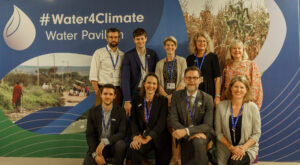How can we make forests resilient to climate change?
“Currently, we lack the quantitative data to really know which combinations of measures are needed to make forests resilient to climate change.”
For the ideal combination, a range of factors needs to be considered such as the location of the forest and the local climate and hydrology. These factors in turn impact the selection of plants and their spacing in forest-based mitigation measures. In addition to analyzing effects of forest measures on climate mitigation, water and biodiversity, the project will place strong emphasis on analyzing the effects on affected local communities.
The project is a cooperation among SIWI, Stockholm Resilience Centre (SRC), Potsdam Institute for Climate Impact Research (PIK), and the WaterCentre@KTH. It builds on previous collaboration and advocacy on unpacking freshwater’s role in climate mitigation with SRC, PIK, the United Nations Development Program (UNDP), Deutsche Gesellschaft für Internationale Zusammenarbeit (GIZ), and others.
The project recently received financing of 14M SEK from Formas, the Swedish government’s research council for sustainable development. The first stage of the project will run for four years with the possibility of a second stage. Formas supports research and innovation, develops strategies, analysis, and evaluations. It is active within the fields of environment, agricultural sciences, and spatial planning.









